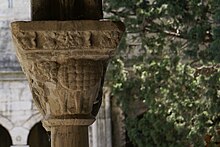Note that the crocodylian in this story is said to resemble an alligator rather than a crocodile. We have heard that description before with the Medcroc reports.
Costa Croc: seven-foot alligator 'on the loose in Spain'
Police on the Costa del Sol are searching for an unusual fugitive: a
seven-foot reptile - believed to be an alligator - that has been spotted in
waterways near the popular tourist resort of Mijas.
The beast, dubbed locally as the Costa Croc, was first sighted last month
near a golf course east of Marbella.
This week officers from Seprona, a special nature protection unit from the
Civil Guard, confirmed the presence of the large reptile after finding its
footprints in undergrowth beside the Majada Vieja, an area of manmade lakes,
just inland from the coast.
Authorities have posted red danger signs across the zone, a popular walking
spot bordering a private golf course, warning: “Grave danger. Crocodile on the
loose.”
Special police motorcycle units are patrolling the area in the hope of locating the animal, which estimated to measure between six and seven feet from nose to tail, as it basks in the sun.
Special police motorcycle units are patrolling the area in the hope of locating the animal, which estimated to measure between six and seven feet from nose to tail, as it basks in the sun.
Local expert Enrique Prieto, manager of the Crocodile Park in nearby
Torremolinos was called in to help identify the exotic fugitive.
He said the tracks had been most likely made by an alligator aged between 12 and 18 years and weighing around 70 kilos. It had probably been released into the wild by an exotic pet collector after growing too big and becoming unmanageable.
”It is unlikely to pose a danger to humans unless they stumbled across it in the undergrowth,” Mr Prieto said, because at this time of year “its metabolism slows in the cold and it has no need to feed”.
But he warned that as the weather got warmer it would start looking for food. “If it hasn't been caught by May or June then human activities in and around the water should be banned.”
Despite the warning signs, visitors have reportedly flocked to the lakelands, a stone's throw from a residential development where many British expats own homes, in the hope of spotting the giant reptile.
Mario Calvente, a local gardener was the first to report seeing a large reptile after he spotted it dozing in the sun in a clearing beside the lake, last month.
”I know what I saw, and it wasn't an iguana,” he told a local newspaper, describing how the sound of his moped disturbed the reptile which slid off into the water as he approached.
”It was two metres long with a big snout and small eyes on top of its head. I didn't want to hang around.”
He said the tracks had been most likely made by an alligator aged between 12 and 18 years and weighing around 70 kilos. It had probably been released into the wild by an exotic pet collector after growing too big and becoming unmanageable.
”It is unlikely to pose a danger to humans unless they stumbled across it in the undergrowth,” Mr Prieto said, because at this time of year “its metabolism slows in the cold and it has no need to feed”.
But he warned that as the weather got warmer it would start looking for food. “If it hasn't been caught by May or June then human activities in and around the water should be banned.”
Despite the warning signs, visitors have reportedly flocked to the lakelands, a stone's throw from a residential development where many British expats own homes, in the hope of spotting the giant reptile.
Mario Calvente, a local gardener was the first to report seeing a large reptile after he spotted it dozing in the sun in a clearing beside the lake, last month.
”I know what I saw, and it wasn't an iguana,” he told a local newspaper, describing how the sound of his moped disturbed the reptile which slid off into the water as he approached.
”It was two metres long with a big snout and small eyes on top of its head. I didn't want to hang around.”

















 Forepart of Manyhumped SS, Backfin and Pectoral fins, derived from Orca (Killer whale) in a position unfamiliar to the witnesses. This also bolstered the opinion that the "Correct" colouration for the type was black on the back, white on the belly-like an Orca.
Forepart of Manyhumped SS, Backfin and Pectoral fins, derived from Orca (Killer whale) in a position unfamiliar to the witnesses. This also bolstered the opinion that the "Correct" colouration for the type was black on the back, white on the belly-like an Orca.









